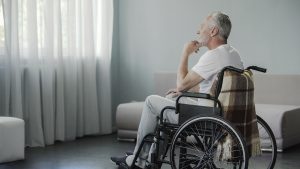
According to an in-depth investigation by The New York Times, the answer is: Unlikely. Reporters analyzed the underlying data that powers those databases and found it to be fundamentally flawed, providing a heavily distorted picture of the level of care offered at nursing homes across the country.
As our Florida nursing home abuse and neglect attorneys understand it, many of these nursing homes fudged self-reported data to government regulators (specifically, the U.S. Centers for Medicare & Medicaid Services). The CMS ratings system that is shared with consumers relies on a mixture of health inspector reports from on-site checks as well as self-reported data.
The rating takes into account:
- How much time nurses and staffers spend with patients.
- The quality of care patients receive.
- How well a facility does in a state inspection.
These three ratings are then combined for an average that is used to determine the overall rating of a facility.
The Times looked at the reliability of these ratings by building its own database that would scan millions of payroll records to ascertain how much in-person care patients were actually receiving compared to what facilities reported their staff ratios to be. They collected nearly 375,000 state inspector reports and financial records from 10,000 of the nation’s 15,000 nursing homes. Some of this data was not used for ratings purposes, but was generated for academic purposes through CMS-university research agreements.
Here’s what they found:
- A lot of what’s reported to CMS is incorrect, in most cases making the facility appear both safer and cleaner than they are.
- Staffing levels were sometimes inflated by facilities that posted rosters of workers who, while employed there, weren’t all on the job at every given time.
- The number of patients receiving antipsychotic medications (a dangerous practice that doesn’t help patients and more often hurts them) is frequently underreported to federal officials.
- Health problems and accidents frequently go unreported.
- Some nursing homes may have advance knowledge of “surprise” inspections.
- Health inspectors often find problems – including abuse and neglect – at five-star facilities. However, the violations usually aren’t severe enough to warrant a lower star rating.
Of the more than 3,500 facilities that have a 5-star rating, more than 2,400 had been cited by health inspectors for issues related to patient abuse and failure to control infections (the latter of which become glaringly obvious when COVID-19 hit; infection rates were largely the same at 5-star nursing homes compared to lower-rated facilities).
But it’s not just that 5-star nursing homes were given a pass on roughly minor problems. Among incidents that allegedly went unreported to the public were patients with bed sores so bad their bones protruded and falls so severe patients never walked again.
The end result was not only that poor care went unchallenged, but that a fair number of nursing homes were wholly unprepared for the pandemic. Facilities had top scores, but they didn’t have enough staff, they didn’t have adequate infection controls, they didn’t provide the level of care the public thought they did – and all of this left the facilities unprepared when COVID-19 hit.
